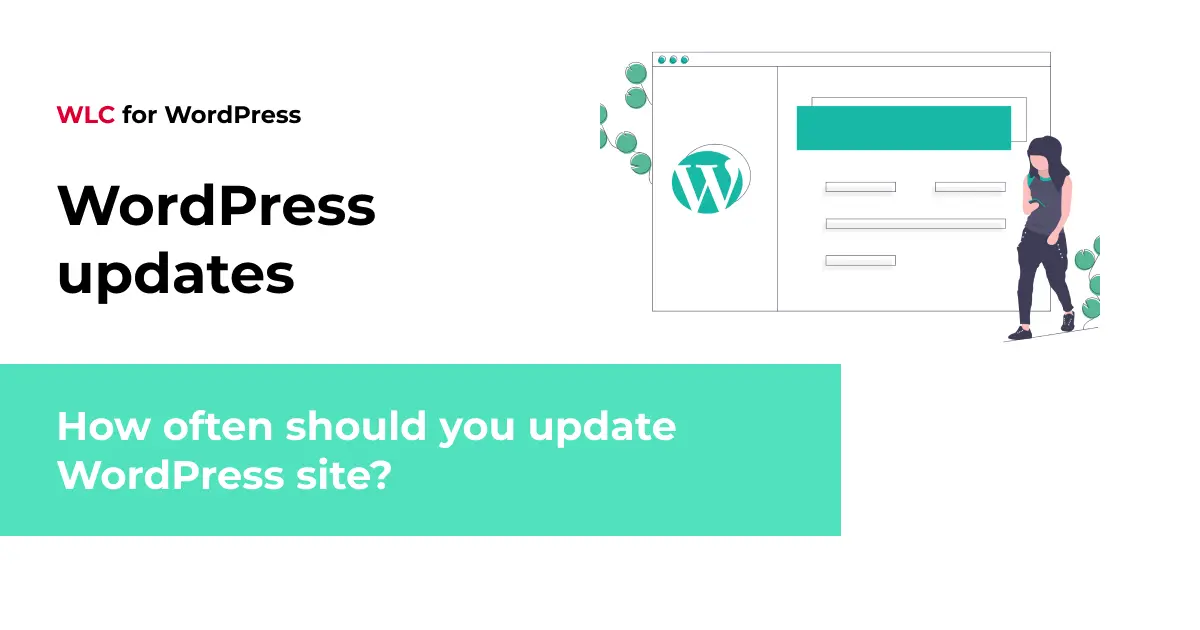Category: WordPress
What is a trading affiliate website?

A trading affiliate website is a specialised platform that connects potential traders with brokers and trading platforms through reviews, comparisons, and educational content. These websites earn commissions when visitors sign up with recommended brokers, typically through CPA (cost per acquisition), revenue share, or hybrid payment models. They serve as trusted intermediaries in the financial services ecosystem, helping traders make informed decisions whilst providing brokers with qualified leads.
What is a trading affiliate website and how does it actually work?
Trading affiliate websites are digital platforms that review, compare, and recommend brokers, trading platforms, and financial products to potential traders. They operate on a performance-based model where the affiliate earns commissions when visitors they refer become active clients of the broker. The revenue typically comes through three main structures: CPA (a one-time payment per qualified sign-up), revenue share (ongoing percentage of trader activity), or hybrid models combining both approaches.
These platforms function as trusted intermediaries between traders seeking reliable brokers and companies looking for qualified customers. The business model works because both sides benefit: traders get unbiased information to make better decisions, whilst brokers acquire customers who are already interested and informed about their services.
Content on these affiliate websites typically includes detailed broker reviews covering regulation, fees, and platform features. You’ll also find comparison tables that let visitors evaluate multiple brokers side-by-side, educational articles explaining trading concepts, and market analysis that attracts both beginners and experienced traders.
The value proposition is straightforward. For users, these websites save time researching dozens of brokers independently and provide transparency around costs and features that might otherwise be hidden. For brokers, affiliate marketing trading delivers better ROI than traditional advertising because they only pay for actual customer acquisitions rather than impressions or clicks.
Why do traders and brokers rely on affiliate websites?
Traders turn to affiliate websites because they consolidate information that would otherwise require visiting dozens of broker websites and piecing together scattered details. These platforms offer unbiased reviews, transparent fee comparisons, and educational resources that help both novice and experienced traders make confident decisions. The comparison tools let visitors evaluate spreads, commissions, regulation, and platform features in one place, saving hours of research time.
Brokers rely on affiliate websites because they deliver qualified leads who are already interested in trading and actively comparing options. Unlike broad advertising campaigns that reach uninterested audiences, broker affiliate programmes connect them with people at the decision stage of their journey.
The performance-based model has become dominant in financial services marketing because it aligns incentives perfectly. Affiliates only earn when they deliver results, so they’re motivated to provide genuinely helpful content that converts. Brokers only pay for actual customers rather than uncertain advertising spend. This efficiency makes affiliate marketing trading more sustainable than traditional marketing channels.
Trust factors play a crucial role in this ecosystem. Traders often feel overwhelmed by the sheer number of broker options and concerned about safety in a market known for scams. Quality affiliate websites build credibility by highlighting regulatory compliance, warning about suspicious operators, and providing detailed information about fund protection measures.
Market transparency is another key benefit. Before trading comparison websites became common, finding accurate information about broker fees, spreads, and conditions was difficult. Affiliates have pushed the industry towards greater openness by making these details easily comparable and holding brokers accountable for their claims.
What are the essential technical components of a successful trading affiliate website?
A successful trading affiliate website requires robust technical infrastructure that handles real-time data, dynamic content, and complex integrations. The foundation includes real-time broker API connections that pull live spreads, fees, and trading conditions, ensuring visitors always see current information. Dynamic comparison tables must update automatically when broker data changes, and live price feeds with interactive charts provide the market data traders expect from professional platforms.
Review management systems are essential for organising broker profiles, user reviews, and rating systems. These need to be flexible enough to accommodate frequent updates whilst maintaining historical accuracy for compliance purposes.
Tracking and attribution technology is absolutely critical for the affiliate business model. You need reliable systems that accurately track which visitors came from your site, completed sign-ups, and became active traders. Without proper attribution, you can’t prove your value to broker partners or optimise your content strategy.
Performance optimisation becomes particularly important for trading affiliate websites because they’re typically data-heavy. Core Web Vitals directly impact both search rankings and conversion rates. A slow-loading comparison table frustrates visitors and increases bounce rates, costing you commissions. Mobile responsiveness is non-negotiable since many traders research brokers on smartphones during commutes or breaks.
WordPress-specific solutions offer practical advantages for building these platforms. Custom Gutenberg blocks let content teams create comparison tables, broker cards, and review sections without developer involvement. A centralised data system (essentially a custom post type structure for brokers) ensures that when you update a broker’s spread or fee, it changes everywhere across your site automatically.
API integration approaches vary depending on broker partnerships. Some brokers provide robust APIs with real-time data, whilst others require manual updates or scraping (which carries legal and reliability risks). Building a flexible integration layer that accommodates different data sources is essential for scaling your affiliate website for brokers.
How do trading affiliate websites handle constantly changing broker data and regulations?
Managing constantly changing broker data and regulations is one of the most challenging operational aspects of running a trading affiliate website. Spreads change based on market conditions, brokers adjust fee structures to stay competitive, promotional offers expire, and regulatory requirements shift across different jurisdictions. Keeping everything accurate whilst scaling content is nearly impossible with manual processes.
Data centralisation solves the core problem by creating a single source of truth for all broker information. Rather than hardcoding broker details into individual pages, you store data in a structured database where each broker is an entity with associated attributes (spreads, fees, regulation, etc.). When you update the central record, changes propagate automatically to every comparison table, review page, and mention across your site.
Automated update systems can pull certain data directly from broker APIs, reducing manual workload. For information that can’t be automated, centralisation still helps by showing content teams exactly what needs updating and where it’s used, preventing the nightmare scenario of outdated fees appearing on some pages but not others.
Compliance management becomes more complex when you operate in multiple markets. Different countries have different advertising rules for financial products, disclosure requirements for affiliate relationships, and restrictions on which brokers can be promoted. A robust content management system needs to handle these variations without creating chaos.
Hreflang implementation for multi-market content ensures search engines serve the right version to users in different countries. You might promote certain brokers in the UK but not in Germany due to regulatory differences, or adjust your messaging to comply with local advertising standards. Proper technical implementation prevents search engines from showing inappropriate content to the wrong audience.
Workflow solutions that reduce manual workload typically involve a combination of automation and smart content architecture. Rather than creating separate pages for every broker comparison, you might use templates that pull from your centralised database. This way, adding a new broker means creating one database entry rather than manually updating dozens of pages.
What makes a trading affiliate website perform well in search engines?
Trading affiliate websites face unique SEO challenges because they compete in highly commercial niches where search engines apply stricter quality standards. Site speed is particularly critical because data-heavy comparison tables and live charts can slow page loads dramatically. Technical optimisation through efficient caching, lazy loading for images and widgets, and server-side rendering for dynamic content directly impacts both rankings and conversion rates.
Structured data for financial products helps search engines understand your content and can earn rich results in search listings. Schema markup for reviews and comparisons signals the nature of your content, potentially earning star ratings in search results that improve click-through rates. Properly implemented schema also helps with featured snippets, which can dramatically increase visibility for informational queries.
Content strategy requires balancing informational and commercial intent. Informational content (guides on trading strategies, explanations of financial concepts) builds authority and attracts top-of-funnel traffic. Commercial content (broker reviews, comparison pages) converts visitors into commissions. Successful forex affiliate websites maintain this balance rather than focusing exclusively on transactional pages.
E-E-A-T factors (Experience, Expertise, Authoritativeness, Trustworthiness) matter enormously in financial niches. Search engines scrutinise financial content more carefully because poor advice can harm users financially. Demonstrating expertise through comprehensive, accurate content, showing author credentials, maintaining transparency about affiliate relationships, and keeping information current all contribute to better rankings.
Link building in regulated industries presents challenges because many financial sites are cautious about linking out. Earning links typically requires creating genuinely valuable resources like original research, comprehensive guides, or tools that other sites want to reference. Guest posting opportunities exist but require careful vetting to avoid low-quality financial sites that could harm your reputation.
Core Web Vitals impact conversions directly on trading affiliate websites. A comparison table that shifts layout whilst loading (poor Cumulative Layout Shift) frustrates users. Slow interaction response (poor First Input Delay) makes your site feel broken. These technical issues don’t just hurt rankings; they cost you commissions by increasing bounce rates before visitors reach your call-to-action.
WordPress optimisation techniques for data-heavy affiliate portals include object caching with Redis to reduce database queries, CDN implementation to serve static assets quickly globally, and selective script loading so comparison tables only load necessary JavaScript. Modern frameworks like Sage provide cleaner code architecture that’s easier to optimise than traditional WordPress themes.
What are the biggest challenges trading affiliates face with website development?
Dependency on development teams for every update is the most frustrating challenge trading affiliates face. When launching a new broker review requires submitting a ticket to developers, waiting days for implementation, and going through revision cycles, you lose the agility needed in fast-moving trading markets. Promotional offers expire before you can publish them, and competitors capture traffic whilst you’re stuck in development queues.
Slow time-to-market for new campaigns directly impacts revenue. When a broker launches an attractive promotion, the first affiliates to publish comparison content capturing that offer earn the most commissions. If your website architecture requires developer involvement for every new landing page, you’re always behind more agile competitors.
Integration complexity with multiple broker APIs creates ongoing maintenance headaches. Each broker provides data differently (or not at all), requiring custom integration work. When APIs change or break, your site displays outdated information until developers fix the connection. Managing dozens of these integrations becomes a significant technical burden.
Performance issues from data-heavy pages are common because trading affiliate websites naturally include lots of dynamic content. Comparison tables with dozens of brokers, live price widgets, interactive charts, and real-time spread data all impact page load times. Without careful optimisation, these features create slow, frustrating user experiences that hurt both SEO and conversions.
Chaotic admin workflows emerge when content teams struggle with inflexible content management systems. Adding a new broker to comparison tables might require editing multiple pages individually, copying and pasting data, and hoping nothing breaks. This manual process is error-prone and time-consuming, preventing teams from scaling content production.
Technical debt from legacy systems accumulates when trading affiliate businesses grow on outdated WordPress themes or custom-coded solutions. The original implementation worked for a dozen broker reviews but buckles under hundreds. Refactoring becomes necessary but expensive, and the business faces a choice between continuing to struggle with limitations or investing significantly in rebuilding.
Scalability concerns arise as successful trading affiliate businesses grow. What worked for one market and 50 brokers doesn’t work for five markets and 500 brokers. Database queries slow down, admin panels become unwieldy, and content teams can’t keep up with updates. Without proper architecture planning, growth creates problems rather than opportunities.
How can modern WordPress architecture solve trading affiliate website challenges?
Modern WordPress architecture transforms how trading affiliates build and manage their websites by separating concerns and empowering non-technical teams. Advanced frameworks like Sage, Bedrock, and Radicle provide clean code structure that’s easier to maintain, more secure, and better performing than traditional WordPress themes. These frameworks follow development best practices that prevent technical debt accumulation and make future enhancements simpler.
Full Site Editing combined with custom Gutenberg block libraries lets content teams build complex pages independently. Rather than requesting developer help for every broker comparison page, marketers can use pre-built blocks for comparison tables, broker cards, fee calculators, and review sections. This autonomy dramatically reduces time-to-market for new campaigns whilst maintaining design consistency.
Centralised data management systems (essentially a Trading Data Center concept) solve the update nightmare by storing all broker information in one place. When you update a broker’s spread or add a new promotional offer, the change appears automatically across every page where that broker is mentioned. This architecture eliminates the manual work of updating dozens of pages individually and prevents inconsistencies that damage credibility.
Server-side rendering improves performance for data-heavy pages by generating HTML on the server rather than relying on client-side JavaScript. Combined with strategic caching, this approach delivers fast page loads even for complex comparison tables with live data. Redis object caching reduces database queries, whilst CDN integration ensures quick delivery globally.
CI/CD pipelines (Continuous Integration/Continuous Deployment) automate testing and deployment processes, reducing the risk of updates breaking your site. When developers push changes, automated tests verify functionality before deployment. This reliability lets you update confidently without worrying about downtime during critical promotional periods.
Custom block libraries specifically designed for trading affiliate content address common use cases. A broker comparison block might pull data from your centralised database, format it consistently, and update automatically when underlying data changes. A fee calculator block could be dropped into any page, inheriting current broker data without manual configuration.
These technologies work together to enable non-technical teams to manage content independently. Your marketing team can launch new landing pages for broker promotions in minutes rather than days. Content teams can update broker reviews without developer involvement. SEO specialists can implement technical optimisations through configuration rather than code changes.
The result is a trading affiliate business that moves at market speed rather than development team speed. You capture opportunities when they arise, test new approaches quickly, and scale content production without proportionally scaling technical resources. The architecture grows with your business rather than constraining it.






